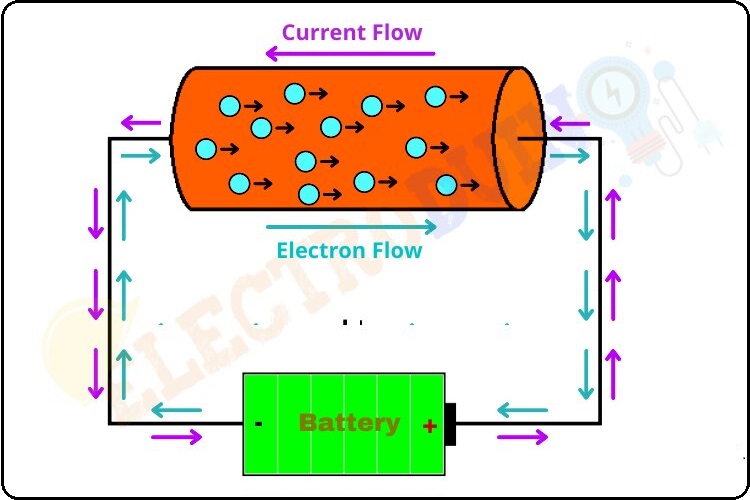What Is EMF? Everything You Need to Know
Electromagnetic fields (EMF) are all around us—from the gentle hum of our household appliances to the invisible signals powering our smartphones and wireless networks. But what is EMF exactly, and why is it important to understand this fundamental concept in physics and modern technology? In this comprehensive guide, we will explore every facet of electromagnetic fields—from their definition and history to their applications, benefits, and the common misconceptions surrounding them. Whether you’re a curious reader, a student, or someone simply trying to make sense of the buzzwords in today’s tech-driven world, this article is your one-stop resource for understanding what is EMF and why it matters.
Introduction: Unveiling the Invisible Forces
Imagine living in a world where invisible forces not only influence how you interact with your environment but also drive the technology that keeps you connected. Sounds like science fiction, right? Yet, these forces—electromagnetic fields—are very real, shaping everything from the weather to the devices you rely on daily.
Did you know that every time you use your mobile phone, microwave, or even your WiFi router, you’re interacting with electromagnetic fields? And while these interactions are essential for modern life, they have also sparked debates about potential health risks and environmental impacts. This guide will walk you through:
- A clear definition of EMF, exploring its essential characteristics.
- A historical overview of the discoveries and milestones that have shaped our understanding of electromagnetic phenomena.
- An in-depth look at the different types of electromagnetic fields, their sources, and how they are measured.
- The practical applications of EMF in science, medicine, and technology.
- Addressing common misconceptions and frequently asked questions about EMF.
- A discussion on modern trends and ongoing research that continue to redefine our relationship with these invisible forces.
By the end of this article, you’ll have a well-rounded understanding of what is EMF and how it impacts your life every day.
What Is EMF? A Straightforward Definition
At its core, an electromagnetic field (EMF) is a physical field produced by electrically charged objects. It affects the behavior of charged particles in the vicinity, generating forces that can either attract or repel other charges. EMF is a fundamental aspect of nature, playing a crucial role in both the physical and technological worlds.
Breaking Down the Basics
Electric Fields:
- Definition: An electric field is generated by stationary or moving electric charges. It is a vector field, meaning it has both magnitude and direction, and it exerts a force on other charged particles within its reach.
- Properties: The strength of an electric field is proportional to the charge producing it and inversely proportional to the square of the distance from the charge (as described by Coulomb’s law).
Magnetic Fields:
- Definition: A magnetic field arises from the movement of electric charges (i.e., electric currents) or from the intrinsic magnetic properties of elementary particles.
- Properties: Like electric fields, magnetic fields are vector fields. They exert forces on moving charges and magnetic dipoles, following the right-hand rule for their direction.
Electromagnetic Fields Combined:
- Interaction: When electric and magnetic fields interact, they create an electromagnetic field. This is not merely the sum of its parts but a dynamic interplay described by Maxwell’s equations—a set of four fundamental equations that underpin classical electromagnetism.
- Wave Propagation: Electromagnetic fields can propagate through space in the form of electromagnetic waves. These waves travel at the speed of light and include a broad spectrum, from radio waves to gamma rays.
Understanding what is EMF means recognizing that these fields are not just abstract concepts confined to textbooks—they have real, measurable effects in our daily lives and in the natural world.
Historical and Contextual Background: The Evolution of EMF Understanding
The story of electromagnetic fields is a fascinating journey through centuries of scientific discovery. It involves brilliant minds, groundbreaking experiments, and transformative theories that have reshaped our understanding of the universe.
Early Discoveries and Pioneers
Michael Faraday (1791–1867):
Faraday was one of the first scientists to systematically study electricity and magnetism. His experiments in the early 19th century demonstrated that a changing magnetic field could induce an electric current in a nearby conductor—a phenomenon known as electromagnetic induction. Faraday’s work laid the foundation for the development of electric generators and transformers, which are integral to modern power systems.James Clerk Maxwell (1831–1879):
Building on Faraday’s discoveries, Maxwell formulated a set of equations that mathematically described how electric and magnetic fields are generated and altered by each other. Maxwell’s equations not only unified electricity and magnetism into a single theory but also predicted the existence of electromagnetic waves—an insight that would later revolutionize communication and technology.
Milestones in EMF Research
The Discovery of Electromagnetic Waves:
In the late 19th century, experiments by Heinrich Hertz confirmed Maxwell’s prediction of electromagnetic waves. Hertz’s experiments demonstrated that these waves could be generated, detected, and manipulated—paving the way for the development of radio, television, and later, wireless communication technologies.The Birth of Wireless Communication:
Guglielmo Marconi’s pioneering work in the early 20th century built on Hertz’s findings, leading to the development of radio communication. Marconi’s innovations opened up new possibilities for transmitting information over long distances without the need for physical wires.Advancements in Medical Imaging:
In the mid-20th century, the understanding of EMF contributed to significant breakthroughs in medical technology. Techniques such as X-rays and magnetic resonance imaging (MRI) rely on electromagnetic fields to create detailed images of the human body, revolutionizing diagnostic medicine.
Notable Historical Anecdotes
The “War of the Currents”:
In the late 1800s, a fierce debate emerged over the best method for distributing electricity—direct current (DC) versus alternating current (AC). Nikola Tesla and Thomas Edison became embroiled in what is now known as the “War of the Currents.” Tesla’s AC system, which relies on the principles of electromagnetic induction and transformation, ultimately became the standard for electrical power distribution, largely due to its efficiency over long distances.Early Skepticism and Modern Debates:
Despite the immense benefits of harnessing EMF, there have always been concerns about its potential risks. Early in the development of wireless technology, some scientists and the public expressed apprehension about the effects of electromagnetic radiation. Today, while modern research has largely alleviated these concerns regarding low-level EMF exposure, debates persist—especially with the rollout of new technologies like 5G networks.
In-Depth Exploration: The Many Facets of Electromagnetic Fields
Now that we have a basic understanding of what is EMF, let’s dive deeper into the subject. In this section, we will explore the components of EMF, its sources, measurement techniques, and practical examples in the real world.
Understanding the Electromagnetic Spectrum
The electromagnetic spectrum is the complete range of all types of electromagnetic radiation. Each type of radiation is defined by its wavelength or frequency, and different parts of the spectrum have distinct properties and applications.
1. Radio Waves
- Wavelength/Frequency: Long wavelengths (from about 1 millimeter to 100 kilometers) and low frequencies.
- Applications: Radio and television broadcasting, cell phones, WiFi, and other forms of wireless communication.
- Real-World Example: When you tune into your favorite radio station, you are receiving radio waves that have been broadcast over long distances.
2. Microwaves
- Wavelength/Frequency: Shorter wavelengths than radio waves, ranging from about 1 millimeter to 1 meter.
- Applications: Microwave ovens, radar systems, and some forms of satellite communication.
- Real-World Example: The kitchen appliance that heats your leftovers operates using microwave radiation to excite water molecules in food.
3. Infrared Radiation
- Wavelength/Frequency: Wavelengths longer than visible light but shorter than microwaves.
- Applications: Remote controls, thermal imaging cameras, and fiber-optic communication.
- Real-World Example: When you use a remote control for your television, it sends infrared signals to switch channels.
4. Visible Light
- Wavelength/Frequency: The narrow band of electromagnetic radiation visible to the human eye (approximately 400 to 700 nanometers).
- Applications: Vision, photography, and illumination.
- Real-World Example: The light from a lamp or the screen of your smartphone is composed of visible light.
5. Ultraviolet (UV) Light
- Wavelength/Frequency: Wavelengths shorter than visible light and longer than X-rays.
- Applications: Sterilization, black lights, and forensic analysis.
- Real-World Example: UV light from the sun is responsible for causing sunburns and plays a role in the production of vitamin D in your skin.
6. X-Rays
- Wavelength/Frequency: Very short wavelengths and high frequencies.
- Applications: Medical imaging, security scanners, and crystallography.
- Real-World Example: X-rays are commonly used in hospitals to view the inside of the human body, helping to diagnose fractures and other conditions.
7. Gamma Rays
- Wavelength/Frequency: The shortest wavelengths and highest frequencies in the electromagnetic spectrum.
- Applications: Cancer treatment, sterilizing medical equipment, and astrophysical observations.
- Real-World Example: Gamma-ray bursts, which are among the most energetic events in the universe, are studied by astronomers to understand the dynamics of distant galaxies.
Sources of Electromagnetic Fields
Electromagnetic fields originate from a variety of sources, both natural and man-made. Recognizing these sources helps us understand how what is EMF is experienced in everyday life.
Natural Sources
- Earth’s Magnetic Field:
The Earth itself is a giant magnet, generating a magnetic field that protects us from solar radiation and cosmic rays. This geomagnetic field is crucial for navigation (both for animals and human-made compasses) and plays a significant role in phenomena like the auroras. - Cosmic Microwave Background Radiation:
This remnant radiation from the Big Bang permeates the entire universe and is a key piece of evidence supporting the Big Bang theory. - Lightning and Atmospheric Electricity:
Lightning strikes create intense, short-lived electromagnetic fields that can be detected and measured.
Man-Made Sources
- Household Appliances:
Everyday devices such as refrigerators, microwaves, televisions, and computers generate electromagnetic fields when in operation. - Power Lines and Electrical Grids:
The transmission of electrical power over long distances produces EMF around power lines and substations. - Mobile Phones and WiFi Routers:
Wireless communication devices emit electromagnetic fields as they transmit data and connect to networks. - Medical Equipment:
Devices like MRI machines and X-ray scanners use electromagnetic fields for diagnostic imaging and treatment.
How Electromagnetic Fields Are Measured
Understanding the measurement of EMF is crucial for both scientific research and practical applications. Various instruments and units are used to quantify the strength and characteristics of electromagnetic fields.
Key Units of Measurement
- Tesla (T) and Gauss (G):
- Tesla: The SI unit for magnetic flux density (1 Tesla = 10,000 Gauss).
- Gauss: Commonly used in older literature; 1 Gauss is equal to 0.0001 Tesla.
- Volts per Meter (V/m):
This unit is used to measure the strength of an electric field. It indicates the voltage difference per unit of distance. - Hertz (Hz):
The frequency of an electromagnetic wave, measured in Hertz, indicates how many wave cycles occur per second.
Instruments and Techniques
- Gaussmeters and Magnetometers:
These devices measure the magnetic field strength and are often used in both industrial applications and scientific research. - EMF Meters:
Handheld devices that can measure both electric and magnetic fields. They are commonly used by technicians, environmental health professionals, and even concerned homeowners. - Spectrum Analyzers:
Advanced instruments that can measure the distribution of power across different frequencies within the electromagnetic spectrum. These are essential in telecommunications and signal processing.
Real-World Examples and Case Studies
1. Mobile Technology and Communication
Every time you make a phone call or send a text message, your mobile device emits electromagnetic fields. The efficiency and reliability of wireless communication depend on the precise manipulation of these fields to transmit information over long distances.
- Case Study: The rollout of 5G networks has intensified research into EMF. Engineers must balance the need for high-speed data transmission with safety standards regarding EMF exposure.
2. Medical Imaging
Medical imaging techniques, such as MRI (Magnetic Resonance Imaging) and X-rays, utilize electromagnetic fields to create detailed images of the human body.
- Example: An MRI machine uses a strong magnetic field combined with radio waves to produce high-resolution images that help doctors diagnose conditions ranging from torn ligaments to tumors. These applications showcase the incredible benefits of harnessing electromagnetic fields for human health.
3. Renewable Energy and Power Distribution
The generation and distribution of electrical power rely on electromagnetic principles.
- Example: In modern electrical grids, transformers use electromagnetic induction to efficiently step up or step down voltages, ensuring that power can be transmitted over long distances with minimal loss. This technology is a direct application of Faraday’s discovery of electromagnetic induction.
Importance, Applications, and Benefits of Understanding EMF
Understanding what is EMF is not merely an academic exercise—it has practical implications that touch nearly every aspect of modern life. Here’s why a solid grasp of electromagnetic fields is important:
Everyday Life and Technological Innovation
Communication:
Without a thorough understanding of electromagnetic fields, the development of wireless communication systems—from traditional radio to cutting-edge 5G and satellite networks—would not be possible. EMF enables the transmission of data across vast distances, connecting people across the globe.Medical Advancements:
Techniques like MRI and X-ray imaging have revolutionized the field of diagnostic medicine. A deep understanding of EMF allows for continual improvements in these technologies, leading to earlier diagnoses, more precise treatments, and ultimately, better patient outcomes.Consumer Electronics:
The functionality of smartphones, laptops, televisions, and countless other devices hinges on the manipulation of electromagnetic fields. As technology continues to advance, so too does our reliance on EMF-based devices, making knowledge in this area both relevant and necessary.
Scientific and Industrial Applications
Research and Development:
Scientists leverage EMF in a wide array of research areas—from exploring the fundamental properties of matter to developing innovative new materials and technologies. Fields such as quantum computing and advanced materials science often rely on precise control and measurement of electromagnetic fields.Environmental Monitoring:
EMF measurement is critical in environmental science. For instance, monitoring the Earth’s magnetic field helps scientists study climate change, geological activity, and even the behavior of migratory animals that rely on geomagnetic cues for navigation.
Economic and Social Benefits
Enhanced Safety Standards:
As concerns about potential health risks from EMF exposure have grown, so has the importance of establishing safety guidelines and regulatory standards. By understanding what is EMF, policymakers and industry experts can work together to create environments that are both technologically advanced and safe for the public.Informed Consumer Choices:
An informed public is better equipped to make decisions regarding technology use. Whether it’s choosing a low-EMF appliance or understanding the safety protocols in your workplace, knowledge empowers you to engage with technology in a responsible way.
Addressing Common Misconceptions and FAQs About EMF
Given its omnipresence and the scientific complexity behind it, many myths and misconceptions have emerged regarding electromagnetic fields. Let’s clear up some of the most common misunderstandings and answer frequently asked questions about what is EMF.
Common Misconceptions
Myth 1: All EMF Is Dangerous
Reality: Not all electromagnetic fields pose a health risk. The danger, if any, typically depends on the strength and frequency of the EMF. Non-ionizing radiation (such as that from household appliances and mobile phones) has not been conclusively shown to cause harm, whereas ionizing radiation (like X-rays and gamma rays) can damage biological tissue in high doses.Myth 2: EMF Exposure Causes Cancer
Reality: Extensive research by organizations such as the World Health Organization (WHO) has found no conclusive evidence that low-level EMF exposure from everyday devices increases the risk of cancer. While high doses of ionizing radiation are known to be harmful, the levels encountered in daily life are typically far below dangerous thresholds.Myth 3: EMF Is a New Phenomenon
Reality: Electromagnetic fields have been a fundamental aspect of the natural world long before the advent of modern technology. The Earth’s magnetic field, cosmic microwave background radiation, and natural electrical discharges (such as lightning) are all examples of natural EMF that have existed for eons.
Frequently Asked Questions (FAQs)
Q: What exactly is an electromagnetic field?
A: An electromagnetic field (EMF) is a physical field produced by electrically charged objects. It consists of both electric and magnetic components that interact with each other and can propagate through space in the form of electromagnetic waves.
Q: How are electromagnetic fields measured?
A: EMFs are measured using devices like gaussmeters, magnetometers, and spectrum analyzers. The strength of an electric field is often measured in volts per meter (V/m), while magnetic fields are measured in units such as Tesla (T) or Gauss (G).
Q: Are everyday devices like mobile phones and WiFi routers dangerous due to EMF exposure?
A: The majority of research indicates that the low-level EMF emitted by common household devices does not pose a significant health risk. Regulatory bodies set safety standards to ensure that exposure levels remain well below harmful thresholds.
Q: Can understanding EMF help me make better choices about my technology use?
A: Absolutely. Knowledge of what is EMF can help you understand how different devices work, assess potential risks, and make informed decisions about the technology you use in your daily life.
Q: What distinguishes ionizing from non-ionizing radiation?
A: Ionizing radiation (e.g., X-rays, gamma rays) carries enough energy to remove tightly bound electrons from atoms, potentially leading to cellular damage. Non-ionizing radiation (e.g., radio waves, microwaves) lacks sufficient energy to ionize atoms and is generally considered less harmful at typical exposure levels.
Modern Relevance and Current Trends in EMF Research
As technology continues to evolve at a rapid pace, so too does the landscape of electromagnetic field research. Modern developments are not only expanding our understanding of what is EMF but are also unlocking new applications and prompting fresh debates.
The Rise of 5G and Beyond
The rollout of 5G networks represents a significant leap forward in wireless communication technology. However, it also brings with it new questions about EMF exposure:
Increased Frequency Range:
5G networks utilize higher frequency bands compared to previous generations. While these frequencies allow for faster data transmission, they also require more closely spaced antennas, prompting discussions about cumulative EMF exposure in urban environments.Ongoing Research:
Regulatory bodies and independent research institutions are actively studying the long-term health effects of exposure to the frequencies used in 5G. Current evidence suggests that the levels remain within established safety guidelines, but continuous monitoring is essential as technology evolves.
Advances in Medical Technology
Electromagnetic fields continue to be a cornerstone of innovations in healthcare:
- Improved Imaging Techniques:
New developments in MRI technology are making scans faster and more detailed, reducing patient discomfort while increasing diagnostic accuracy. - Targeted Cancer Therapies:
Research into using electromagnetic fields for targeted drug delivery and hyperthermia (raising the temperature of cancer cells) is underway, offering promising avenues for cancer treatment.
Smart Homes and the Internet of Things (IoT)
The proliferation of smart devices—from thermostats and lighting systems to security cameras—relies heavily on EMF for communication. As homes become smarter and more interconnected, understanding EMF is increasingly relevant for:
- Energy Efficiency:
Optimizing the operation of smart devices can reduce overall energy consumption and minimize unnecessary EMF exposure. - Data Security:
With more devices connected to the internet, ensuring secure and interference-free communication becomes critical.
Environmental and Industrial Applications
Electromagnetic fields are not just confined to personal technology—they play a pivotal role in industrial and environmental monitoring:
- Renewable Energy Systems:
Innovations in wind and solar power often involve the use of EMF in monitoring and optimizing energy production. - Environmental Sensing:
Advanced sensors that rely on EMF are used to track changes in the environment, such as shifts in the Earth’s magnetic field that might signal geological activity.
Future Directions and Debates
The study of EMF is dynamic, with ongoing debates and research on several fronts:
- Health and Safety Regulations:
As new technologies emerge, regulatory agencies continue to update safety standards to ensure that public exposure to EMF remains within safe limits. - Interdisciplinary Research:
The intersection of physics, biology, and engineering in the study of EMF is fostering a new era of interdisciplinary research. Scientists are exploring how EMF interacts with biological tissues at the molecular level, leading to more informed safety guidelines and innovative applications in medicine. - Consumer Awareness:
With the growing prevalence of EMF in daily life, public interest in understanding these fields is at an all-time high. Educational initiatives and accessible resources—like this article—play a crucial role in demystifying EMF for a broader audience.
Conclusion: Embracing the Power of Electromagnetic Fields
In summary, what is EMF? It is a dynamic and essential component of our universe—a field generated by electrically charged particles that manifests in both electric and magnetic forms. From powering our homes and enabling our communications to driving groundbreaking advances in medicine and industry, electromagnetic fields are a fundamental force that underpins much of modern life.
Key Takeaways
- Definition and Nature:
Electromagnetic fields are created by electrically charged particles and can propagate as waves, forming the basis of the electromagnetic spectrum. - Historical Evolution:
Pioneers like Faraday and Maxwell revolutionized our understanding of EMF, laying the groundwork for countless technological innovations. - Practical Applications:
EMF is integral to communication systems, medical imaging, power distribution, and even renewable energy. - Safety and Misconceptions:
While concerns about EMF exposure exist, extensive research has shown that everyday levels of non-ionizing EMF are generally safe. - Modern Relevance:
From 5G networks to smart homes, the study of EMF is evolving alongside technology, ensuring that our understanding keeps pace with innovation.
A Call to Action
As we continue to integrate technology into every aspect of our lives, understanding what is EMF becomes increasingly important. Whether you’re a student, a professional, or simply a curious mind, we encourage you to explore further, ask questions, and engage with the latest research in this fascinating field. Share your thoughts in the comments below, and don’t hesitate to spread the word by sharing this post with friends and colleagues who might also benefit from a deeper understanding of electromagnetic fields.
For those interested in digging deeper, consider exploring reputable resources such as the World Health Organization’s information on EMF or the IEEE Xplore Digital Library for scholarly articles on the subject.
Additional Resources for Further Reading
To help you continue your journey into the world of electromagnetic fields, here are some valuable resources and links:
World Health Organization (WHO):
Visit WHO’s EMF page for information on safety guidelines and health research related to EMF exposure.Institute of Electrical and Electronics Engineers (IEEE):
Explore the IEEE Xplore Digital Library for peer-reviewed articles and technical papers on electromagnetic theory and applications.Scientific American and National Geographic:
Both offer accessible articles on the science behind EMF, including historical breakthroughs and modern technological advancements.Educational Platforms:
Websites like Khan Academy and Coursera offer courses on electromagnetism, which can help solidify your understanding of the concepts discussed in this post.
Final Thoughts
Electromagnetic fields may be invisible to the naked eye, but their impact is unmistakable. By learning what is EMF and understanding its role in our lives, we not only appreciate the marvels of modern technology but also gain insight into the natural forces that have shaped our world for billions of years. From the sparks that ignited the industrial revolution to the high-speed wireless networks of today, EMF remains at the heart of innovation and progress.
As you move forward, keep in mind that the study of EMF is an evolving field, with new discoveries and technologies continually pushing the boundaries of what we know. Stay curious, ask questions, and most importantly, share your newfound knowledge with others. After all, understanding the invisible forces that govern our universe is one of the most empowering journeys you can embark upon.
Thank you for taking the time to read this comprehensive guide on what is EMF. We hope it has enriched your understanding and sparked your curiosity to explore further into the fascinating world of electromagnetic fields.



 4.1 Attribution Theory and Person Perception: Why We Judge People the Way We Do (Even When We’re Totally Wrong) Let’s be honest. We’ve all
4.1 Attribution Theory and Person Perception: Why We Judge People the Way We Do (Even When We’re Totally Wrong) Let’s be honest. We’ve all



